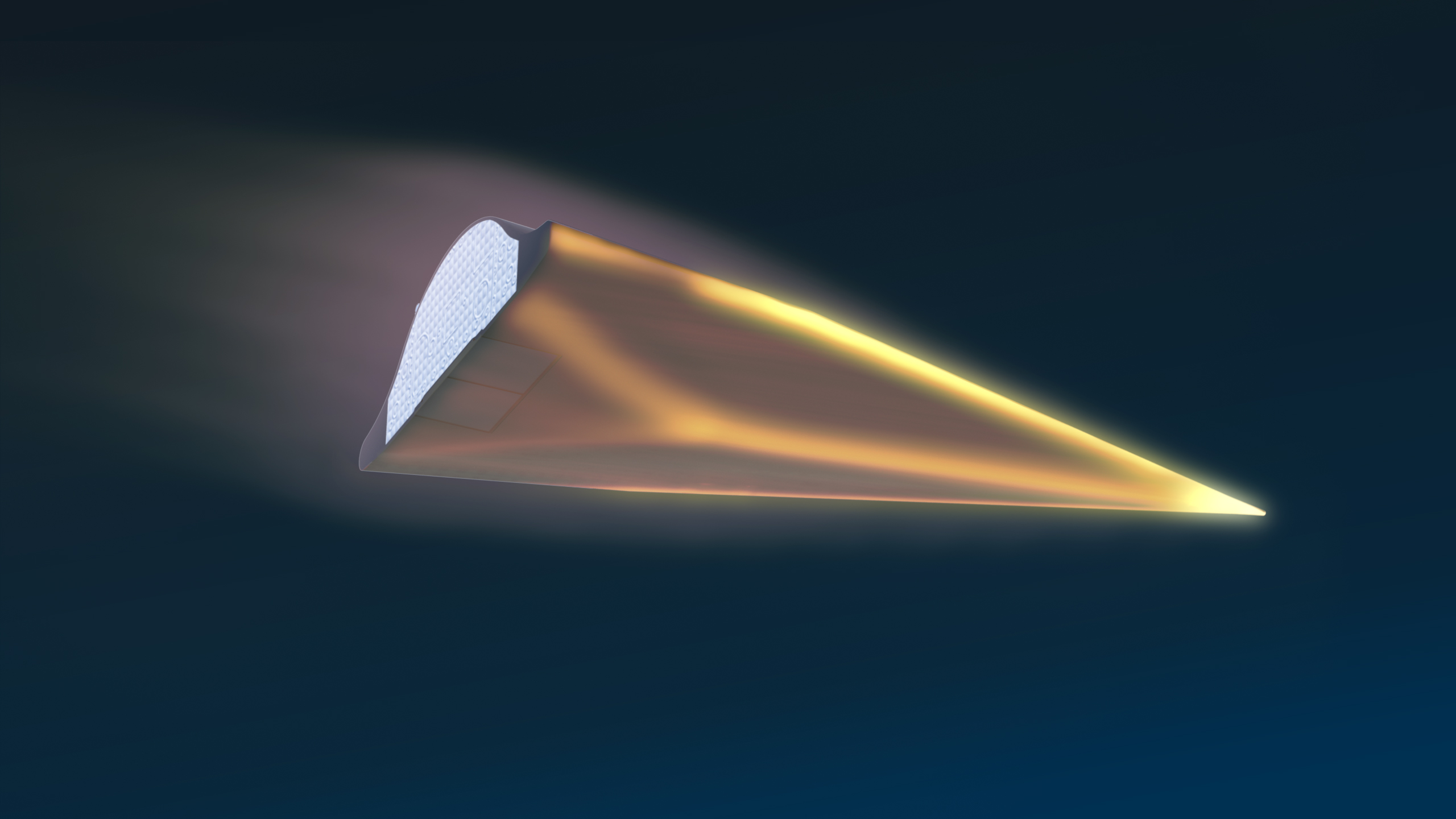Superfast Military Aircraft Hit Mach 20 Before Ocean Crash, DARPA Says

A superfast unmanned military plane traveled at 20 times the speed of sound and managed to control itself for three minutes before crashing into the Pacific Ocean in a recent test, military officials said.
The prototype Falcon Hypersonic Technology Vehicle 2 (HTV-2), billed as the fastest aircraft ever built, splashed down in the Pacific earlier than planned on Aug. 11 shortly after launching from California's Vandenberg Air Force Base on its second-ever test flight.
The HTV-2 experienced some sort of anomaly, prompting the vehicle's autonomous flight safety system to guide it to a controlled splashdown, according to the Defense Advanced Research Projects Agency (DARPA), which oversaw the flight. [Photos: DARPA Hypersonic Glider's Mach 20 Test]
Despite the problem, the aircraft reached speeds around Mach 20 (about 15,000 mph) and was able to control its flight for several minutes, officials said.
"HTV-2 demonstrated stable, aerodynamically controlled Mach 20 hypersonic flight for approximately three minutes," said DARPA director Regina Dugan in an Aug. 14 statement. "We do not yet know the cause of the anomaly for Flight 2."
The HTV-2 is part of an advanced weapons program called Conventional Prompt Global Strike, which is working to develop systems to reach an enemy target anywhere in the world within one hour. It launches on a rocket, then comes streaking back to Earth at enormous speeds, at times heating up to temperatures of nearly 3,500 degrees Fahrenheit.
DARPA officials said last week that the Aug. 11 test flight collected more than nine minutes of data during the entire mission.
Get the Space.com Newsletter
Breaking space news, the latest updates on rocket launches, skywatching events and more!
The first test flight of the HTV-2 took place in April 2010. That flight lasted about nine minutes, also ending when the aircraft detected an anomaly and crashed itself into the ocean. [10 Military Aircraft That Never Made it Past Testing]
An analysis conducted by an independent engineering review board prompted engineers to adjust the HTV-2's center of gravity and make several other changes before the second test. Those fixes apparently corrected the first problem, officials said.
"An initial assessment indicates that the Flight 2 anomaly is unrelated to the Flight 1 anomaly," said Air Force Maj. Chris Schulz, DARPA HTV-2 program manager.
Another independent review board will look into what went wrong with the second flight test in the coming weeks, DARPA officials said.
Editor's Note: This article was corrected to reflect that Mach 20 is closer to 15,000 miles per hour than 13,000.
Follow SPACE.com for the latest in space science and exploration news on Twitter @Spacedotcom and on Facebook.
Join our Space Forums to keep talking space on the latest missions, night sky and more! And if you have a news tip, correction or comment, let us know at: community@space.com.

Space.com is the premier source of space exploration, innovation and astronomy news, chronicling (and celebrating) humanity's ongoing expansion across the final frontier. Originally founded in 1999, Space.com is, and always has been, the passion of writers and editors who are space fans and also trained journalists. Our current news team consists of Editor-in-Chief Tariq Malik; Editor Hanneke Weitering, Senior Space Writer Mike Wall; Senior Writer Meghan Bartels; Senior Writer Chelsea Gohd, Senior Writer Tereza Pultarova and Staff Writer Alexander Cox, focusing on e-commerce. Senior Producer Steve Spaleta oversees our space videos, with Diana Whitcroft as our Social Media Editor.









